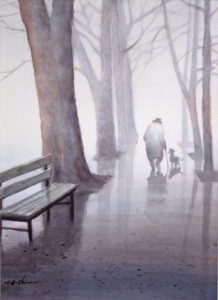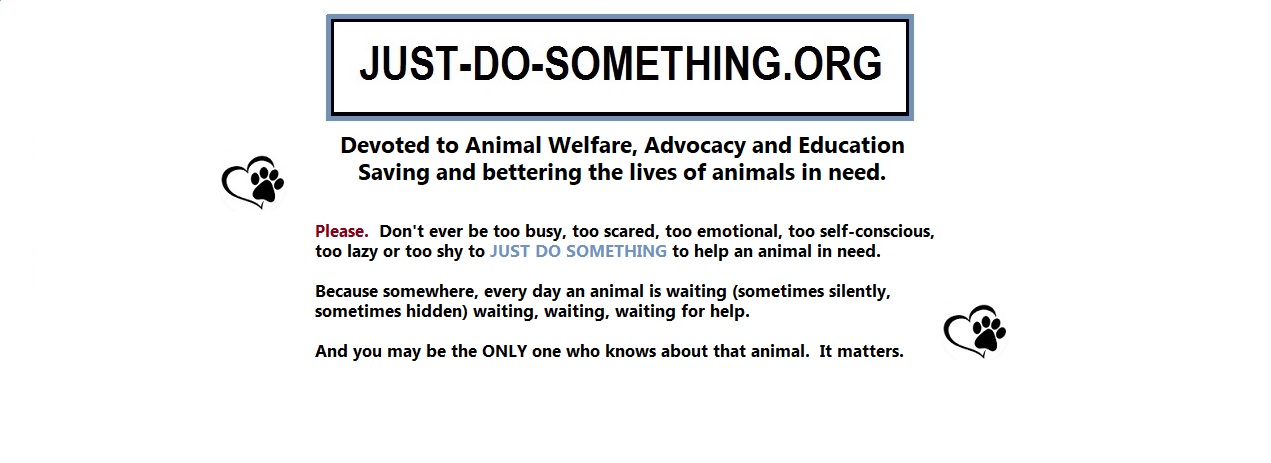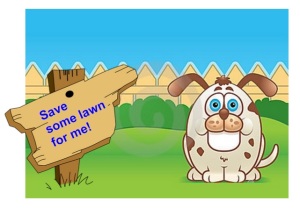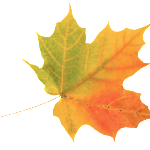Fall can suck for animals

First, we have to say it: Did you know?
- There are roughly 7 million stray dogs and cats in the U.S. at any given time.
- Many people will not take in a stray dog or cat, especially during mild weather, because they feel strays can fend for themselves if it’s nice out.
- There are many people who will not even call to report an injured animal in the mild weather for the same reason.
When talking about stray (homeless, ownerless) animals, the majority of people take this to mean dogs and cats. But common stray animals are not the only animals to be negatively impacted by their circumstance. ANY animal (including wild animals and birds) can have a difficult time, depending on their environment and their health.
Never turn your back on any animal in distress or in danger. The type of animal and the situation should always be taken into thoughtful consideration before you make the decision to aide that animal yourself. Even a stray dog or cat can be a possible risk to you if that animal is ill or becomes frightened when trying to approach it. Not sure? Call your local authority.
Onto Fall.
Ah, Autumn! The sunflowers, the milder weather, the shorter days.
Unfortunately, many people think that leaving pets outside day and night in the Fall season without basic care and attention is enough.
Fall days and nights can be rough on animals in general, and here’s a few important reasons why:
- Lack of always-available clean, fresh, cold water – think about warm water in an unclean bowl that sits out all day – would YOU drink that?
- Lack of shade from the sunshine – yep, Fall days can still be HOT
- Lack of shelter from the elements – days and nights can be dewy and rainy, resulting in muddy, damp, soggy ground
- Lack of protection from biting and stinging insects – and this includes those bugs that make homes in dog houses
- Lack of alleviation for allergy symptoms – yep, animals suffer from allergies also
- Lack of boredom alleviation from being kept in the same spot every day
- Food (and dish bowls with uneaten food) that sits out all day runs risk of becoming spoiled and can attract other animals
- Unhygienic environments when an animal is forced to void, sleep, eat and pace in the same area
Just like Summer, Fall can cause a bunch of misery for animals. To name an obvious few:
- Seasonal colds from damp wet grounds and cooler temperatures
- Dehydration
- Heat Exhaustion
- Sunburn
- Blisters and sensitive spots on paws from hot pavement
- Insect Bites
- Allergies
- Hunger – many people forget to think that animals who are outside animals are FORGOTTEN more than one would think for regular feedings
And, social media is buzzing with warnings about the importance of NEVER leaving ANY animal in a closed car. Fall temps in enclosed places can still get HOT. A cracked window on an 80 degree day will NOT keep an animal safe from interior heat. Remember, if YOU see ANY animal in an unhealthy, unsafe situation, JUST DO SOMETHING. Your action may be THE action to save a life.
Things to think about:
- Even well meaning pet owners may not realize they should not simply put their animal outside for prolonged periods of time during the Fall This is especially true for new pet owners who may not yet be well educated on environmental pet care and for elderly pet owners who may forget from time to time the importance of routinely checking on their pets once they are outside.
- Take the time to speak up if you see a domestic animal staying outside for too long. Especially those that are routinely chained in one place.
It matters to that animal. - Domestic pets that are in-door animals, should be limited in the amount of time spent outside in ANY element.
- If it’s still warm enough for you to be affected by the heat, then chances are you pet is being affected too. Invite your pet inside for some air conditioning time.
- Humans have sandals; animals have paws. Although the bottom of your pet’s paws may feel rough, they are sensitive to hot (and cold). Hot surfaces like pavement and tarred driveways can burn and blister, stones can tear and scrape, and other rough surfaces can do damage – AS CAN PESTICIDES (and make you pet sick if s/he licks their paws after they come indoors). Most domestic animals dislike “booties”, so simply pay attention to the amount of time your pet is walking on surfaces that can burn or injure, and take the time to gently wipe off paws after being outdoors. Especially if your pet has environmental allergies. A quick paw-soak or bath after playing on cut grass can be a very soothing allergy-symptom reliever. NOTE: If your pet appears to be dealing with more allergy symptoms or insect bites causing licking, itching, and/or causing your pet to act unlike him or herself, a vet visit is in store.
- Is it a Fall rainy day? No-one likes to sit around and be soggy. Any soft, clean absorbent towel is great for drying off your pet after outdoor time. Be sure to routinely wash any toweling used to dry your pet.
- Speaking of drying off, if you plan on taking your pet to a dog park or swimming area, watch for signs of stress and/or infection. Dogs can pass sickness between each other, and unclean water can cause your pet to get sick internally or externally.
Pesticide Season:
Pesticide Season starts in Spring, and for many, continues on until late Fall. Before you make the decision to treat with pesticides, think about your pets, wildlife babies, and our environment. If you do decide to treat YOUR lawn, be conscious of where your pets routinely go outside, and the little critters that you know roam on your property. Let your lawn guys know you have a pet that goes outside, and if you know of certain areas that critters enjoy, mention that, also. Ask them to leave an area untreated so your pet and other critters can enjoy your yard without easily coming into contact with lawn treatments, which can cause internal and external issues just by licking or touching pesticides.
- Before treating your lawn, before they arrive, remove water sources and ground feeding stations. Pesticide poisoning HURTS.
- Try to keep your pet off treated lawns for the first 24-hours.
- Do not put out any food or water to entice other critters to your yard for 24-hours.
- Have an “out” plan in place if you treat your entire lawn, so your pet can still get out for exercise and relief.
- Be aware of neighbors who treat their lawns – stay away!
- Wipe off paws any time your pet walks on treated ground.
- Never let your pet lie or roll on treated ground.
- As a courtesy to other pet owners, leave your lawn treatment signs up at least two days to make others aware.
Animals are still very active in the Fall!
Not sure what to do with the end of season Pumpkins and Gourds? Crack them open and put them out for birds and wildlife! The seeds and pulp will be eaten by birds and wildlife alike! Clean them up after two weeks to avoid mold and rot.
Helping Wildlife during Fall Migration:
This fall, migrating wildlife may travel through your backyard on their way to their winter home. How can you help these travelers with their long journey? Here are a few tips:
Hummingbirds:
Hummingbirds, like the ruby-throated hummingbird, can travel up to 2,000 miles south to Central America. Place a hummingbird feeder in your habitat as a refueling stop for these travelers.
Butterflies:
Across the country, monarch butterflies are heading south toward Mexico and southern California, flying up to 3,000 miles. Plant native milkweed and late blooming nectar plants such as goldenrod and asters to draw in these colorful travelers.
Migratory songbirds:
Plant trees and shrubs to provide songbirds, like warblers, with a place to roost and to refuel on berries or insects during their travels.
Wild Animals:
- Why should you save those pine cones? Find out (and tell others) HERE.
- Don’t rake and prune so much! Why? Read more (and share) HERE.
- Wildlife is everywhere, and so many of them are babies experiencing their first Fall and learning the ropes! Drive Slow. Mow Carefully. Keep tree removals to a minimum. If you make the decision to prune bushes, do so with care. Keep active fire-pits away from low hanging trees. We’ll say it again: Wildlife is everywhere!
- Every year, thousands of wild animals will be killed or injured by cars. While Spring finds more animals roaming about, Fall is when many animals start to look for warm, safe places to hibernate and/or begin to ready for the winter. This is a good time to talk about what to do if you see ANY injured animal.
- Click HERE for helpful information on what you can do.
- Come across any baby birds or animals? Leave them alone unless it’s clear they are abandoned or in distress. Not sure? Call your local rescue or wildlife rehabilitators to find out what you may need to do.
- If you have a dog that loves to chase, make sure wild animals (think squirrels, raccoons, rabbits, and their babies) are protected as best as you can, before you let your dog out.
Outdoor Dogs:
- We’ll say it again – many people think that rainwater and snow is a great source of water in the cooler months. Not true. Start thinking about getting a heated ground birdbath for an outside pet.
- Keep the area in which your dog lives in, clean of waste, garbage, and old food.
- Some dog owners do not use flea medicine – remember that many bugs will continue to bite into the Fall.
- If your dog is an outside dog, clean out the doghouse, wash the bedding, clean up the area around the doghouse, and clean out the water bowl. Routinely check doghouses and bedding for spiders, mites and other bugs that love to nest inside them. Some bites can be painful, and can become quickly infected without an owner knowing right away.
Birds:
- Getting ready to feed birds in the Winter? Click HERE for great tips to practice and share.
- Many birds migrate in the Fall, but many more stick around. If you are planning to feed birds in the Fall, once you start, it’s best NOT to stop. Birds will identify a reliable food source, and then come to depend on that food source for their Fall and Winter survival.
- Keep feeding stations clean. Dirty feeders invite illness and disease.
- Don’t overfill your feeders. Uneaten and/or left out seed and food items will spoil, and start to smell.
- Always offer fresh, clean water. Clean out your bird baths every week. You may want to think about a heated bird bath for the colder months. Snow does not cut it for hydration, and many birds will die from dehydration over the winter.
- After the first frost, you can put away your Hummingbird Feeder until next Spring. Clean it before you store it!
- Do you like to feed the ducks and geese? A bag of corn works better than bread.
- Speaking of ducks and geese – if you spot a stray one hanging around in the same area every day, chances are s/he is unable to fly. That is a death sentence to any duck/goose as the colder months hit us. Make a call to a local bird rehabilitator. You can help prevent a slow and painful death by starvation.
Strays:
Provide shelter.
- If bringing the animal inside your home is not an option, help him/her survive the cooler elements by providing shelter such as a sturdy cardboard box lined with a good amount of clean, dry straw (straw is the main insulator that rescuers use when helping out strays or domestic outdoor animals who stay outside).
- Straw provides a soft but effective barrier against the cold and damp, keeps warmth in (if you pile it in a good amount), is pliable enough so animals can burrow and surround themselves with it, and does not mold quickly.
- Don’t bother with towels and blankets as these will get wet in a storm and stay damp.
Enticing the animal into your garage will also work.
- Ensure proper bedding for warmth and comfort, as garages usually are not heated.
- Make sure that harmful products normally stored in the garage are completely out of the way.
- Cars should never be running in the garage at any time if there is an animal in there!
Are you already providing shelter to a stray?
- Time to change the straw or bedding!
- Just like a human, animals can develop sores and sensitive skins from dirty, unwashed bedding.
- Replace straw and/or wash bedding!
- A stray’s life can be pretty miserable. Don’t add to it by overlooking this simple necessity.
Provide food and water.
- Always ensure that there is a daily supply of fresh, clean water easily available – that may mean a heated birdbath in place of a water bowl for many strays.
- Providing stray animals with fresh, clean food and water can help them survive better because they will need to use less energy to scrounge up their dinner.
- A well-fed, well hydrated animal is also better prepared to fight off illness and infection.
- Steer clear of canned food as it is more likely to spoil when the temperatures climb.
Remember, if you do take in a stray animal:
- Make sure your first stop is with a licensed veterinarian who can assess the animal for diseases and make sure that it is immunized and safe to be around your children or other pets.
- If you don’t want to bring the stray to a shelter, reach out to your local rescue groups to see if someone can take him/her.
And remember, for the FALL, or ANY time of year:
Always SPEAK UP.
- Keep your eyes and ears open. If you become aware of a situation where ANY animal is in distress or danger, DO SOMETHING about it.
- Call local authorities and WAIT until someone comes to the animal’s aide.
- You may be the ONLY witness and/or the ONLY one to help that animal in that situation.
- Don’t be nervous or worried if you have to report an act of animal abuse or neglect.
YOU are their voice. - If you are not sure about what you think you see, call for help anyway. You might be saving a life.
What are your Fall tips for pets and wildlife? Share it with us, and we’ll pass it around! All efforts matter for ANY time of year, when it comes to helping out our animals.
Happy Safe Fall!









